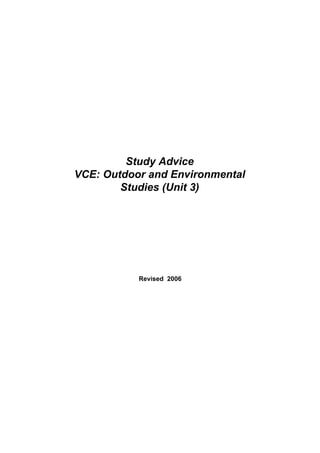This document provides an overview of historical perspectives on relationships with the Australian outdoors from indigenous, early European settler, and gold rush to federation periods. It discusses how indigenous Australians maintained deep spiritual connections to "country" and lived sustainably off the land for over 50,000 years. In contrast, early European settlers viewed the land as unowned and exploited resources unsustainably for short-term profit with little regard for environmental impacts. Significant environmental degradation occurred rapidly due to population pressures and farming practices imported from Europe. The document also notes debates around the extent of environmental impacts from indigenous land management practices.











